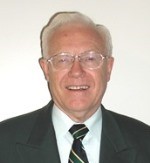A Critique on the Theory of Constraints
as Applied to Project Management
ADVISORY
By Dr. Kenneth Smith, PMP
Honolulu, Hawaii
& Manila, The Philippines
In a PMWJ article last year,[1] I addressed several major causes of project schedule slippages. Amongst them was normative use of the PERT formula[2] — a practice that both Dr. Eliyahu Goldratt of Theory of Constraints (TOC) [3] fame and myself pinpointed as detrimental; albeit from different perspectives.
PERT’s ‘Earliest Expected Time’ includes a safety factor for risk; but Goldratt conjectured all too often, it proliferated procrastination. While trade union shop stewards defended the need for safety norms, without a sense of urgency, workers wallowed in ‘wait & hurry up;’ and downstream managers similarly deferred preparing for succeeding activities. Consequently, instead of the prevailing practice, Goldratt advocated tighter planning deadlines. His recommended approach was to schedule activities with ‘Most Likely’ — or better — time estimates; and relegate the time component of All Critical Path-related activity risks to a collective ‘Project Buffer’ AFTER the last project activity. [NOTE: This was a TOC technique – extant since 1990 – which Goldratt had utilized effectively to improve scheduling efficiency in production line flow-through, and logistical supply chain replenishment.]
I had also experienced that many estimators treated the ‘Pessimistic Time’ estimate diffidently, citing ‘Murphy,’ ‘unknown unknowns,’ &/or jokingly proposing ‘Infinity minus 1’ for the value. So Goldratt’s conjecture — that activity risks were overestimated — was not unreasonable. However, his assumption that it led to complacency and time wastage, as well as his approach for dealing with risk disquieted me as contraindicated, which precluded me from applying his ‘collective risk buffering’ technique in toto. Nevertheless, I saw some value in the systematic technique when I first encountered it in the late 1990’s; adapted it for my planning consultancy work and training workshops as another ‘best practice;’ and also included the variation amongst my aforementioned suggested remedies to rectify the project schedule slippage situation. Subsequently, I developed a complementary ‘quick & easy’ buffering template for on-the-job application — illustrated in that same article.
Recently however, a colleague referred me to an article by Graham Rand[4] — contemporary to Goldratt’s exposition — in which the red flags that disconcerted me in 1997 were highlighted as positive aspects! Consequently, even at this belated date, it is imperative I summarize Goldratt’s rationale (as outlined in Rand’s article) to clarify why and how I modified the buffering approach.
To reiterate: while acknowledging the prevalence of risk in all situations, Goldratt conjectured ‘Pessimistic Time’ estimates inflated the ‘safety time’ embedded in the weighted means of ‘Earliest Expected Times’ “beyond reasonable degrees of certainty.” To rectify this situation, Goldratt’s prescription was essentially threefold:
More…
To read entire article, click here
How to cite this article: Smith, K. F. (2023). On Critical Chain Scheduling & Buffering: A Critique on the Theory of Constraints as Applied to Project Management, advisory article, PM World Journal, Vol. XII, Issue I, January. Available online at https://pmworldlibrary.net/wp-content/uploads/2022/12/pmwj125-Jan2023-Smith-on-critical-chain-scheduling-and-buffering.pdf
About the Author

Dr. Kenneth Smith
Honolulu, Hawaii
& Manila, The Philippines
![]()
Initially a US Civil Service Management Intern, then a management analyst & systems specialist with the US Defense Department, Ken subsequently had a career as a senior foreign service officer — management & evaluation specialist, project manager, and in-house facilitator/trainer — with the US Agency for International Development (USAID). Ken assisted host country governments in many countries to plan, monitor and evaluate projects in various technical sectors; working ‘hands-on’ with their officers as well as other USAID personnel, contractors and NGOs. Intermittently, he was also a team leader &/or team member to conduct project, program & and country-level portfolio analyses and evaluations.
Concurrently, Ken had an active dual career as Air Force ready-reservist in Asia (Japan, Korea, Vietnam, Thailand, Indonesia, Philippines) as well as the Washington D.C. area; was Chairman of a Congressional Services Academy Advisory Board (SAAB); and had additional duties as an Air Force Academy Liaison Officer. He retired as a ‘bird’ colonel.
After retirement from USAID, Ken was a project management consultant for ADB, the World Bank, UNDP and USAID.
He earned his DPA (Doctor of Public Administration) from the George Mason University (GMU) in Virginia, his MS from Massachusetts Institute of Technology (MIT Systems Analysis Fellow, Center for Advanced Engineering Study), and BA & MA degrees in Government & International Relations from the University of Connecticut (UCONN). A long-time member of the Project Management Institute (PMI) and IPMA-USA, Ken is a Certified Project Management Professional (PMP®) and a member of the PMI®-Honolulu and Philippines Chapters.
Ken’s book — Project Management PRAXIS (available from Amazon) — includes many innovative project management tools & techniques; and describes a “Toolkit” of related templates available directly from him at kenfsmith@aol.com on proof of purchase of PRAXIS.
To view other works by Ken Smith, visit his author showcase in the PM World Library at https://pmworldlibrary.net/authors/dr-kenneth-smith/
[1] Smith, K. F. (2022). Schedule Slippages, Root Causes & Recommended Remedies, PM World Journal, Vol. XI, Issue V, May. https://pmworldlibrary.net/wp-content/uploads/2022/05/pmwj117-May2022-Smith-schedule-slippages-root-causes-remedies.pdf
[2] PERT Earliest Expected Time = [Optimistic Time + 4(Most Likely Time) + Pessimistic Time] / 6
[3] Goldratt E. M. What is this thing called the theory of constraints? NY: The North River Press, 1990.
[4] Rand, G. R. Critical chain: the theory of constraints applied to project management, Department of Management Science, The Management School, Lancaster University, Lancaster LA1 4YX, UK. [E-mail address: g.rand@lancaster.ac.uk (G.K. Rand)]. (Circa 2000)









